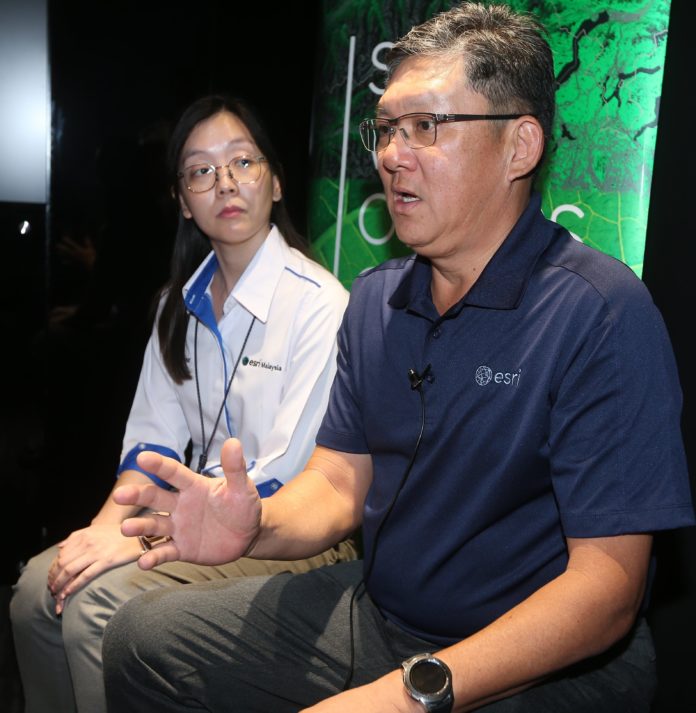SHAH ALAM, 28 November 2019: Challenges confronting cities and communities are becoming increasingly sophisticated, but with evolving trends continuously shaping technology, Esri Malaysia – the country’s leading geospatial adviser – believes we are better equipped to solve them now, more than ever before.
At the Geographic Information Systems (GIS) Day 2019 launch, Joanne Loh, Chief Technology Strategist at Esri Malaysia, said, “Cities will always be changing. Whether it’s the population, the economic viability, or the state of our public infrastructure – decisions which made sense 10 years ago can quickly be overtaken by trends and events happening in our environment several years later.”
“So how can we do a better job of anticipating changing circumstances? We can do this by maximizing our access to all available information to improve the quality of our decision-making,” said Ms Loh. She was speaking at an event held at the new Esri office in Shah Alam – its largest regional support hub, at 16,000 square feet.
“With the emergence of trends such as IoT, AI, and Big Data analytics, decision-makers are now given the capability and foresight to take smarter steps in maximizing resource investments and crafting tailored programs and policies,” she said.
With the Launch of Malaysia’s Smart Cities Framework last September, Prime Minister Tun Dr Mahathir Mohamad said turning cities into smart cities is among the main thrusts of the 12th Malaysia Plan (2021-2025).
The great news, according to Ms Loh, is that the evolution of geospatial technology now allows cities to roll-out smart city applications without writing a single line of code.
“We’ve been working with cities in Malaysia for nearly two decades and this has allowed us to develop focused, rapidly deployable smart city solutions that makes it easier for cities, regardless of their size, to jumpstart their Smart City journey. “
As an example, Ms Loh mentioned how decision-makers looking after public works and infrastructures can use GIS technology to help cities and government agencies make the most out of their public infrastructure investments.
Having visualized information on all public infrastructures – such as reservoirs, bridges, dams, etc – via an interactive map-based dashboard allows decision-makers to plan ways to maintain and extend their lifespan.
“This ensures we get the most out of taxpayers’ money, and future generations can benefit and enjoy the infrastructures we’ve built and maintained for them,” Ms Loh said.
“This is just one of the many ways GIS technology is helping cities worldwide. Beyond public infrastructures, GIS technology is transformational in supporting emergency response, law enforcement, health, and many other industries.”
“As Esri Founder and President Jack Dangermond would always say, the use of GIS is limited to our imagination and this is why we celebrate GIS Day. We celebrate the communities transformed by GIS. The cities that became smarter with GIS. And the future that will be shaped by GIS,” Ms Loh concluded.
Other organizations joining the worldwide celebration include the Civil and Environmental Engineering’s Geospatial and Modelling Research Group in Perak and WWF Malaysia in Kuching.
